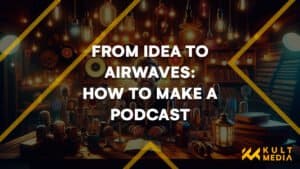Inbound content marketing can feel like navigating a labyrinth.
I think it’s essential for business growth, but where do you even start?
The complexities of inbound content marketing often leave businesses feeling lost and overwhelmed.
They understand the importance of creating valuable content to attract potential customers, yet they struggle with implementing and maintaining an effective strategy.
It’s not as simple as email marketing, writing a blog post or sharing an update on social media; there’s so much more to it than that!
If this is something you can relate to, rest assured that you are not alone. You’re certainly not alone in your struggles with inbound marketing tactics.
I’ve heard many tales from business owners who have endeavoured to craft content, only to find themselves in a quandary, unable to figure out how they can bring in prospects and make them into steadfast patrons.
No surprise there!
The truth is, without mastering the art of inbound content marketing, scaling your business could remain just out of reach.
Table Of Contents:
- Understanding Inbound Content Marketing
- The Inbound Marketing Funnel
- Designing an Effective Content Strategy
- Optimising for Search Intent and SEO
- Creating Enticing Lead Magnets
- Optimising Landing Pages For Conversion
- Building An Inbound Marketing Website
- Utilising Various Formats for Diverse Contents
- 9 Steps To Generate More Leads With Strong CTAs (Call-to-Action)
- FAQs in Relation to Inbound Content Marketing
- Conclusion

Understanding Inbound Content Marketing
In the realm of digital marketing, inbound content marketing is emerging as a powerful tool for attracting potential customers.
This strategy revolves around creating valuable content and using strategic linking to engage audiences organically via search engines—an approach that’s often more impactful than traditional outbound marketing tactics.
The Power of Valuable Content in Attracting Customers
To understand inbound content marketing, it’s crucial to appreciate how this methodology diverges from conventional advertising strategies.
Rather than pushing promotional messages onto consumers (as seen with traditional methods), inbound focuses on pulling prospective customers towards your brand by offering relevant and engaging content they are actively seeking out. A classic example of this would be a case study; demonstrating the transformation for a previous customer and their experience working with you.
A Shift From Outbound To Inbound Methodology
Content Marketing Institute, among others, emphasises the shift from interruptive outbound marketing strategies like cold-calling or direct mail campaigns towards non-disruptive inbound approaches such as SEO-optimised blog posts or email campaigns providing useful information based on customer interests.
This subtle yet effective form of engagement allows businesses to not only attract but also retain their ideal audience through the consistent delivery of high-quality material.
With these insights into what defines inbound content marketing, we can now delve deeper into its core components, starting with understanding the ‘Inbound Marketing Funnel’.
The Inbound Marketing Funnel
Understanding the inbound marketing funnel is pivotal for any successful content marketing strategy.
This approach, as HubSpot defines inbound marketing, revolves around three key stages: attracting potential customers, engaging with them effectively, and delighting them consistently to foster customer retention.
Attraction through Tailored Content
To attract prospective customers, your brand needs to offer valuable content that resonates with their interests and challenges. This involves creating blog posts or social media updates centred on topics relevant to your defined audience. The aim is to draw in visitors who have a genuine interest in your product or service, not just boost traffic.
Engaging Audience with Interactive Tools
In this stage of the buyer’s journey, interaction becomes crucial. You can use tools like email campaigns or webinars designed around users’ preferences and behaviours gleaned from data analytics. By providing experiences tailored specifically to each user’s unique context, brands not only hold attention but also build stronger relationships, leading to conversions into sales leads.
Delighting Customers with Continuous High-Quality Content
Last but definitely not least is delighting existing customers by continuously delivering high-quality content even after they’ve made a purchase. This could be achieved via personalised emails containing useful tips related to purchased products and services, exclusive offers, etc. Remember, happy clients become loyal advocates for your brand, promoting you organically among their networks, hence expanding your reach beyond traditional methods.

Designing an Effective Content Strategy
A solid content strategy is the backbone of a successful inbound marketing approach.
This isn’t just about creating valuable content but also aligning it with your target audience’s interests and needs at every stage of their buyer’s journey.
Aligning Goals With Potential Customers’ Interests
To create engaging content that drives profitable customer action, understanding your potential customers is crucial.
- Dive deep into market research to identify what truly resonates with them.
Improving Brand Awareness Through Strategic Planning
Your content should be more than informative; it should also build brand awareness.
- Create pieces that showcase your unique value proposition and highlight why you’re different from competitors in the industry.
Finally, remember: Your ultimate goal shouldn’t only focus on attracting new customers; existing ones matter too. A good mix between acquisition-focused strategies and those aimed at customer retention can ensure long-term success for any business.
As we move forward to discuss search intent and SEO optimisation next, keep these points top-of-mind; they will play a significant role there as well.
Optimising for Search Intent and SEO
The essence of a successful inbound marketing strategy lies in understanding and catering to the search intent behind users’ queries.
This is not just about predicting what your potential customers are searching for, but also why they’re doing so.
Predicting Searcher’s Query For Better Results
To achieve this, it’s crucial to conduct thorough keyword research that goes beyond simply identifying popular terms within your target market.
You should aim to uncover long-tail keywords and semantic variations that truly reflect the needs and desires of your ideal customers.
Importance Of Keyword Selection And Placement
It suggests considering factors like relevance, search volume, and ranking difficulty when selecting keywords.
Your chosen keywords need careful placement throughout content creation, from titles and meta descriptions through headings down to the body text itself—all while ensuring readability isn’t compromised by over-optimisation.
This strategic use of relevant content aids search engine optimisation (SEO), making you more visible on platforms such as Google or Bing, where prospective clients might be looking for solutions you provide.
Creating Enticing Lead Magnets
In the realm of inbound marketing strategy, lead magnets play a crucial role.
They are essentially free items or services that you offer to your potential customers in exchange for their contact details, paving the way for further engagement and customer retention.
Different Types Of Lead Magnets To Use
The type of lead magnet used can vary based on your business model and your target audience’s preferences.
E-books, webinars, case studies, exclusive articles—these are all examples of content that could serve as effective lead magnets.
A well-crafted e-book offering valuable insights into an industry trend might attract those looking to deepen their knowledge, while a webinar could appeal more to people seeking interactive learning experiences tailored specifically towards them.
Case studies, meanwhile, demonstrate how your product or service has benefited existing customers, thereby building trust among prospective ones. Exclusive articles provide unique perspectives, making readers feel special, thus enhancing brand awareness.
Optimising Landing Pages For Conversion
In the world of inbound marketing strategy, landing pages play a crucial role in converting visitors into potential customers.
The first step is to keep it simple yet impactful.
A cluttered page can deter users, while a clean design with clear messaging can enhance the user experience and drive profitable customer action.
Keeping It Simple Yet Impactful
An effective landing page should be free from distractions that might divert attention away from your core message or call-to-action (CTA).
This includes eliminating unnecessary links, keeping forms short and straightforward, and using engaging content such as bullet points for easy readability.
Personalisation Of Offers To Appeal Emotionally
To truly connect with your audience on an emotional level, personalise offers based on their interests or previous interactions with your brand. Marketo’s Definitive Guide to Lead Nurturing suggests this could increase sales opportunities by more than 20%.
Building An Inbound Marketing Website
In the world of inbound marketing, a website is more than just an online presence.
It’s a platform designed to attract, engage, and delight potential customers at every stage of their buyer’s journey.
Mapping Website Design According To Buyer Journey
A well-designed site aligns with your customer’s journey, from attraction through consideration to decision-making stages.
This alignment ensures that visitors are presented with relevant content and engaging experiences tailored specifically for them.
- The ‘attraction’ phase involves creating valuable content that draws in prospective customers via search engines or social media platforms. This could be blog posts, videos, infographics, or case studies highlighting how your product solves problems they may have.
- During the ‘consideration’ stage, users need detailed information about the products and services you offer. Web design should facilitate easy navigation towards this information, along with testimonials and reviews, to build trust.
- ‘Decisional” step requires clear CTAs (call-to-action) leading towards purchase options alongside robust customer service channels for any queries or concerns prospects might have before making final decisions.
Beyond these elements, though, lies another crucial aspect: optimisation, not only for user experience but also search engine visibility (SEO).
We will now delve into various formats suitable across diverse contents as we move further on our inbound methodology path.
Utilising Various Formats for Diverse Contents
In the realm of inbound marketing, understanding your target audience is crucial.
This comprehension aids in creating valuable content that resonates with potential customers, driving profitable customer action, and building brand awareness.
The Role of Diverse Content Throughout Buyer Journey
Different types of contents cater to various stages within a buyer’s journey.
- Blog posts are an excellent tool at the attraction stage; they provide relevant information while improving search engine optimisation (SEO).
- Videos can be highly engaging during the consideration phase, helping prospective customers understand product features or services better.
- Email campaigns often come into play during the decision-making process; personalised messages could sway a prospect towards making purchase decisions favouring your business.
To ensure success, it’s essential to align these diverse forms of content creation with each stage on this path, from attracting customers through engagement to finally delighting them post-purchase.
9 Steps To Generate More Leads With Strong CTAs (Call-to-Action)
The call-to-action (CTA) is a powerful tool in your inbound marketing strategy.
It’s the prompt that encourages potential customers to take action, guiding them further along their buyer’s journey.
Create Urgency
To drive profitable customer action, leverage digital-era scarcity techniques. HubSpot defines this as creating the impression of limited availability or a time constraint on your offer.
Keep Important Elements Above The Fold Line
Your CTA should be easily visible without scrolling down. This optimises the user experience and increases click-through rates.
A/B Test Your CTAs
Different versions of a single CTA can yield different results. Experiment with various designs, colours, and texts to see what works best for attracting customers.
FAQs in Relation to Inbound Content Marketing
What is an example of inbound content?
Inbound content can be a well-structured blog post, informative eBooks, webinars, or even podcasts that provide value to the audience and help attract them towards your brand organically.
What are three types of inbound marketing?
The three primary types of inbound marketing include content marketing (blogs and videos), SEO (search engine optimisation), and social media marketing.
What are some examples of inbound marketing?
Inbound marketing examples encompass creating educational blog posts, hosting webinars, developing infographics for social media sharing, and implementing on-page SEO techniques for better search visibility.
What is inbound and outbound content marketing?
Inbound content marketing focuses on attracting customers through valuable content creation, while outbound involves pushing messages outward via traditional advertising methods like TV ads or direct mail.
Conclusion
Unleashing business growth with inbound content marketing isn’t rocket science; it’s a journey.
You’ve dived into the depths of understanding this powerful strategy and seen how it can transform your brand’s reach.
The magic lies in attracting, engaging, and delighting customers organically. It’s about creating tailored content that speaks directly to them.
A solid content strategy is key to aligning goals with customer interests while enhancing brand awareness through strategic planning. SEO optimisation? Essential!
Lead magnets have been unveiled as game-changers, providing immediate gratification for potential customers’ contact details. Landing pages also play a part in conversion strategies.
Your website should be an inbound marketing haven, designed around buyer journeys rather than seller objectives. Diverse contents cater to varied buyer personas at different stages of their journey.
And let’s not forget those all-important CTAs! They’re your prompts, encouraging purchases from customers and driving conversions up!
Inbound content marketing has shown itself to be a mighty tool for business growth. Are you ready to wield its power?












